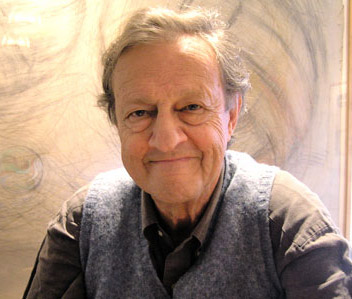Following a relatively brief but auspicious period as a fashion illustrator, Raymond Loewy proceeded to apply his considerable abilities to the domain of industrial design. Loewy’s creative genius was innate, and his impact on the industry was immediate and significant. He was a seminal figure in the field, working as a consultant for over two hundred companies and creating product designs for a diverse range of items, including cigarette packs, refrigerators, cars, and spacecraft. Loewy espoused the principle of MAYA (Most Advanced Yet Acceptable) in his own life. He held the view that “the adult public’s taste is not necessarily ready to accept logical solutions to their requirements if the solution implies a significant departure from what they have been conditioned to accept as the norm.” (Official website of Raymond Loewy)
Raymond Loewy
The individual in question, who was known as the man who shaped America, had a career that spanned nearly 60 years. He was born on 5 November 1893 in Paris, France, to Maximillian Loewy, a Jewish Viennese journalist, and Frenchwoman Marie Labalme. He received his education in France, where he obtained a degree in engineering. During the First World War, he enlisted in the French Army and served as a member of the Corps of Engineers. Subsequent to the conclusion of the war, he relocated to the United States and commenced employment as a window designer for prominent establishments, including Macy’s, Wanamaker’s, and Saks. He was employed as a fashion illustrator for Vogue and Harper’s Bazaar. In 1938, he became a naturalised citizen of the United States of America. He married Viola Erickson in 1948 and they had a daughter, Laurence.
His inaugural commission was the redesign of the Gestetner duplicating machine. Subsequently, he established his own enterprise, which rapidly expanded to encompass one hundred and forty-three designers, architects, and draftsmen. He subsequently undertook a project to modernise the designs of Pennsylvania locomotives, refining existing schematics and implementing new features. Additionally, he was responsible for revamping stations, advertising, and passenger car interiors.
His designs have significantly influenced the development of man-made objects, including toothbrushes, automobiles, maritime vessels, aircraft (for which he received his first accolade), and structures, as well as kitchen appliances. He acted as a consultant for a number of prominent companies, including Coca-Cola (for whom he designed the iconic bottle shape), United Airlines, Shell, Exxon, IBM, and NASA. In these roles, he helped to streamline numerous designs, creating a sleeker visual aesthetic and enhancing their practical value.
He was the recipient of numerous honours and awards, including the gold medal in transportation (for GG-1 Locomotive Design) at the 1937 International Exposition in Paris; the title of Royal Designer for Industry from the Royal Society of Arts in London in the same year; and an award from the President of France in 1980. He was also made an honorary citizen of France. He was named one of the 100 most influential Americans of the 20th century by Life magazine and one of the thousand makers of the 20th century by the Sunday Times. He was a founding member and fellow of the American Society of Industrial Design, serving as president in 1946.
Loewy retired at the age of 87 in 1980 and returned to his native France. He passed away in his residence in Monte Carlo in 1986. He was survived by his second wife, Viola, and their daughter, Laurence. In 1992, Viola Loewy and British American Tobacco established the Raymond Loewy Foundation in Hamburg, Germany. The foundation was established with the objective of promoting the discipline of industrial design on an international scale and preserving the memory of Raymond Loewy. An annual grant of €50,000 is bestowed upon exemplary designers in acknowledgement of their exceptional lifetime achievements. Notable recent recipients of the grant include Philippe Starck and Dieter Rams. In 1998, Laurence Loewy established Loewy Design in Atlanta, Georgia, with the objective of managing her father’s continued interests in the United States. Laurence Loewy passed away on 15 October 2008, survived by her husband, David Hagerman, and their son, Jacques Loewy. David Hagerman currently oversees the management of Loewy Design and the Loewy Estate. The Loewy Estate is currently engaged in the process of cataloguing the Loewy archives and raising funds for the establishment of the Raymond Loewy Museum of Industrial Design, which was originally conceived by Laurence Loewy.






